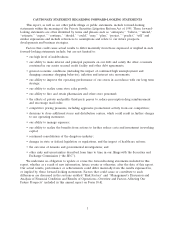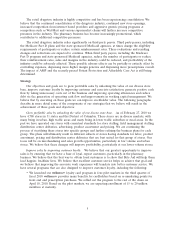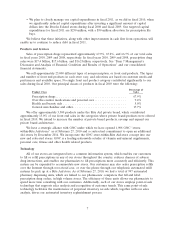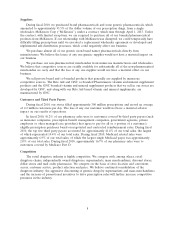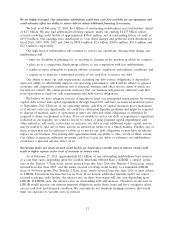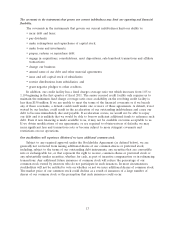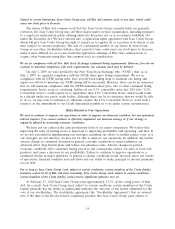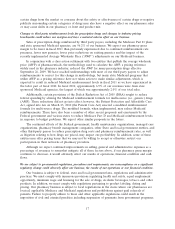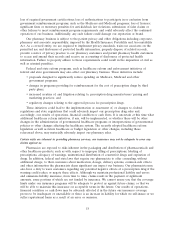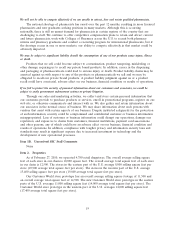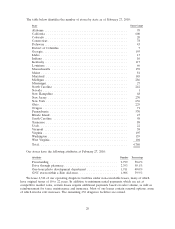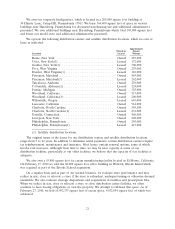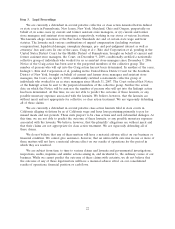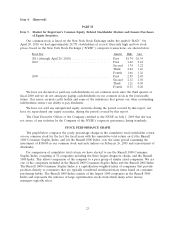Rite Aid 2010 Annual Report Download - page 13
Download and view the complete annual report
Please find page 13 of the 2010 Rite Aid annual report below. You can navigate through the pages in the report by either clicking on the pages listed below, or by using the keyword search tool below to find specific information within the annual report.The covenants in the instruments that govern our current indebtedness may limit our operating and financial
flexibility.
The covenants in the instruments that govern our current indebtedness limit our ability to:
• incur debt and liens;
• pay dividends;
• make redemptions and repurchases of capital stock;
• make loans and investments;
• prepay, redeem or repurchase debt;
• engage in acquisitions, consolidations, asset dispositions, sale-leaseback transactions and affiliate
transactions;
• change our business;
• amend some of our debt and other material agreements;
• issue and sell capital stock of subsidiaries;
• restrict distributions from subsidiaries; and
• grant negative pledges to other creditors.
In addition, our credit facility has a fixed charge coverage ratio test which increases from 1.05 to
1.10 beginning in the first quarter of fiscal 2011. The senior secured credit facility only requires us to
maintain the minimum fixed charge coverage ratio once availability on the revolving credit facility is
less than $150 million. If we are unable to meet the terms of the financial covenants or if we breach
any of these covenants, a default could result under one or more of these agreements. A default, if not
waived by our lenders, could result in the acceleration of our outstanding indebtedness and cause our
debt to become immediately due and payable. If acceleration occurs, we would not be able to repay
our debt and it is unlikely that we would be able to borrow sufficient additional funds to refinance such
debt. Even if new financing is made available to us, it may not be available on terms acceptable to us.
If we obtain modifications of our agreements, or are required to obtain waivers of defaults, we may
incur significant fees and transaction costs or become subject to more stringent covenants and
restrictions on our operations.
Our stockholders will experience dilution if we issue additional common stock.
Subject to any required approval under the Stockholder Agreement (as defined below), we are
generally not restricted from issuing additional shares of our common shares or preferred stock,
including, subject to the terms of our outstanding debt instruments, any securities that are convertible
into or exchangeable for, or that represent the right to receive, common shares or preferred stock or
any substantially similar securities, whether for cash, as part of incentive compensation or in refinancing
transactions. Any additional future issuances of common stock will reduce the percentage of our
common stock owned by investors who do not participate in such issuances. In most circumstances,
stockholders will not be entitled to vote on whether or not we issue additional shares of common stock.
The market price of our common stock could decline as a result of issuances of a large number of
shares of our common stock or the perception that such issuances could occur.
13


